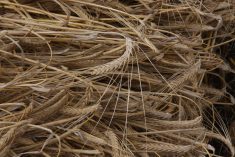Fed prices drop
Fed cattle prices continue to weaken, dropping nearly $2 per hundredweight from last week, said Canfax.
Live Alberta steers averaged $84.71 per cwt. and 13,938 were offered for sale. On the rail prices ranged from $138-$146 per cwt. Ontario fats averaged $93 and $158-$161 on the rail. No rail prices were available for Saskatchewan or Manitoba. Saskatchewan finished cattle were $82-84 per cwt while Manitoba was $77-$84.
However, prices for D1, 2 cows and bulls rose $2. Cows were selling between $32-$45 with some topping out at $52. Some analysts suggest moving culls animals now rather than waiting for the U.S. border to open to cattle older than 30 months.
Read Also

Vegetable oil stocks are expected to tighten this year
Global vegetable oil stocks are forecast to tighten in the 2025-26 crop year, this should bode well for canola demand.
So far this year, 372,975 cows and 20,550 bulls have been slaughtered. That is a 43 percent increase over last year for cows and a six percent increase for bulls. Steer kill is running at 77 percent of a year ago and heifers are at 82 percent, said Canfax.
The larger cow kill is adding more beef to the overall slaughter mix. Meat from the non-fed sector is up 42 percent over last year this time. As of July 15, 275 million pounds are available. On the fed side, 1.1 billion lb. of beef has been produced, a drop of 20 percent from last summer.
Cattle on feed
Fed cattle futures prices fell early this week as traders reacted to a report that put the number of cattle in U.S. feedlots at the second largest level in 10 years.
A relentless drought in the Plains forced ranchers to sell steers and heifers because there was no grass for grazing. A United States Department of Agriculture report July 21 showed there were 10.872 million cattle in U.S. feedlots as of July 1, five percent more than a year ago and the second largest July 1 supply since 1996 when the government initiated the current reporting format.
Heavy feeders dominate
Large calves in the 800-900 lb. range are still in demand, said Canfax. More came to market in the last week but quality was variable. British Columbia and Saskatchewan 800 lb. steers garnered an average of $106 per cwt. Alberta averaged $115 and Manitoba was $104 per cwt.
Projected Alberta prices on 850 lb. steers for August are $120.32 per cwt., September calls for $119.62 and October is $116.08.
Exports strong
Live cattle exports to the United States for cattle younger than 30 months continue strong.
More than 346,560 slaughter ready cattle have left Canada so far this year and more than 186,690 feeders were exported to fill continuing demand in the U.S. beef market, said Canfax.
The U.S. cattle on feed report released July 21 showed a higher than expected increase of 10 percent in June placements. The report depressed cattle futures prices.
Hog prices rise
Cash hog prices in the United States rose last week, despite falling pork prices and weak packer margins that might signal lower prices soon.
U.S. slaughter for the past two weeks has been larger than at the same time last year, raising concerns about oversupply in the pork market as a heat wave prevailed across much of the country, limiting demand for meat.
The Iowa-southern Minnesota live cash price for hogs delivered to plants climbed to $52 US per cwt. July 21, up from $49-$50 on July 14.
The composite pork carcass cut-out value fell to $71.39 July 21, down from $76.21 July 14.
Federal slaughter in the U.S. was estimated at 1.97 million last week, up from 1.95 million the week before and 5.4 percent more than last year at the same time.
Sow slaughter in the U.S. has been running ahead of last year’s pace. One reason might be operators deciding to address disease problems by depopulating and repopulating their barns. Others might be modernizing their genetic lines with young sows.
Heavy lambs fall
Ontario Stockyards reported 2,038 sheep and lambs and 123 goats traded. Light lambs traded at barely steady prices, while heavy lambs were up to $20 cwt. lower. Sheep sold barely steady and the goats held firm.
Bison unchanged
Saskatchewan Bison Association reported Canadian rail carcass prices for top quality bison bulls younger than 30 months were steady at $1.70 to $1.90 per lb. last week.
The U.S. Department of Agriculture July 10 report said the weighted average price for hot carcass weight bison bulls younger than 30 months was up slightly at $179.52 US per cwt.
The North American Bison Co-operative’s fall 2006 contract offer for bison bulls younger than 30 months is $1.90 per lb.
















